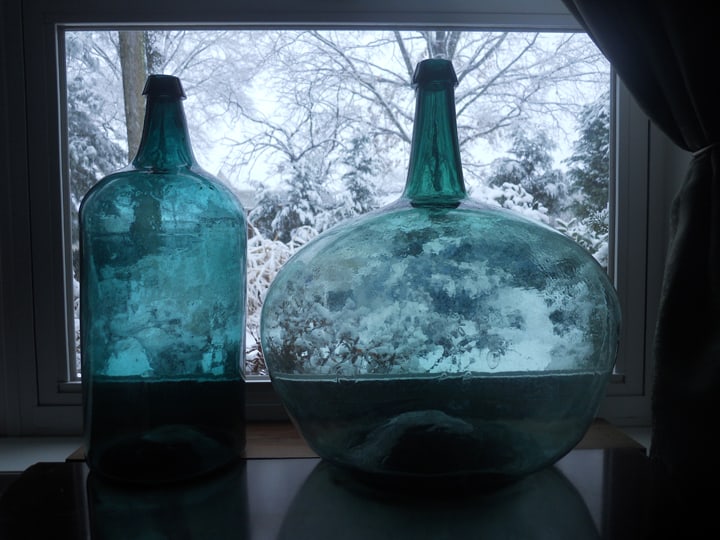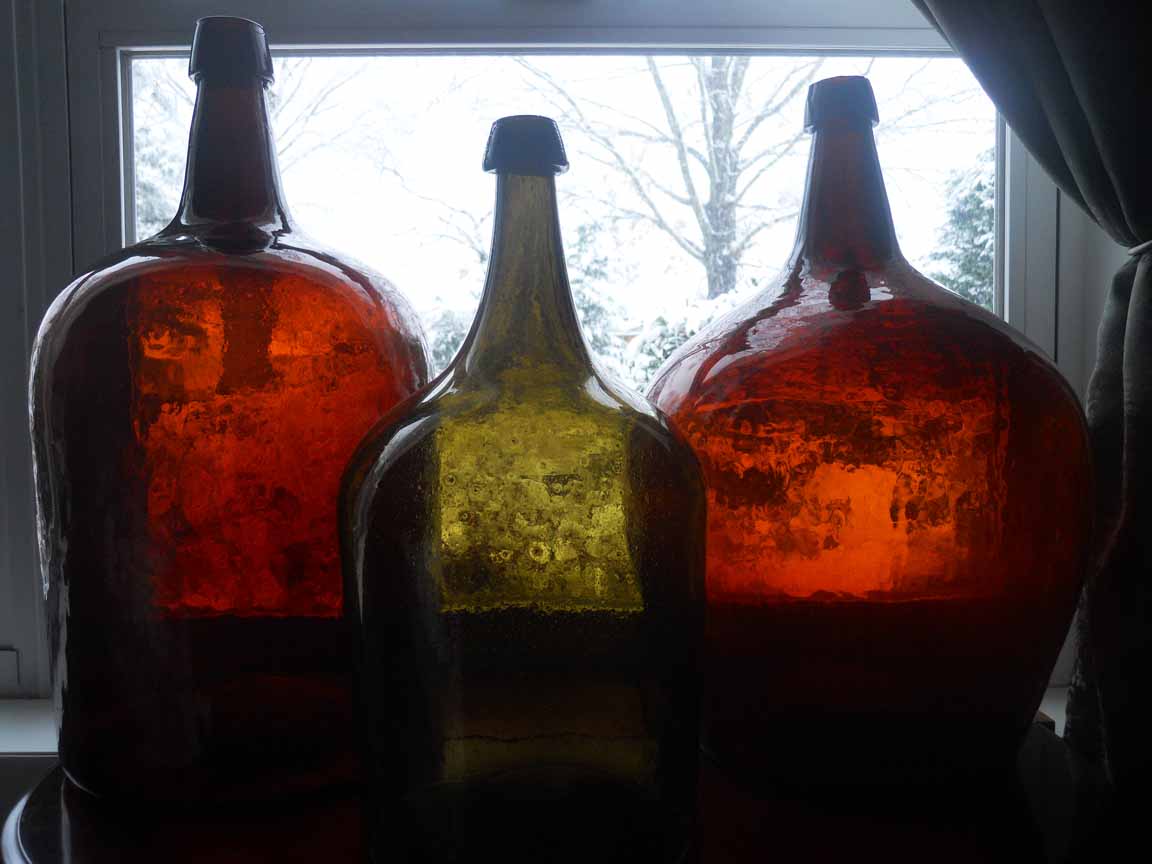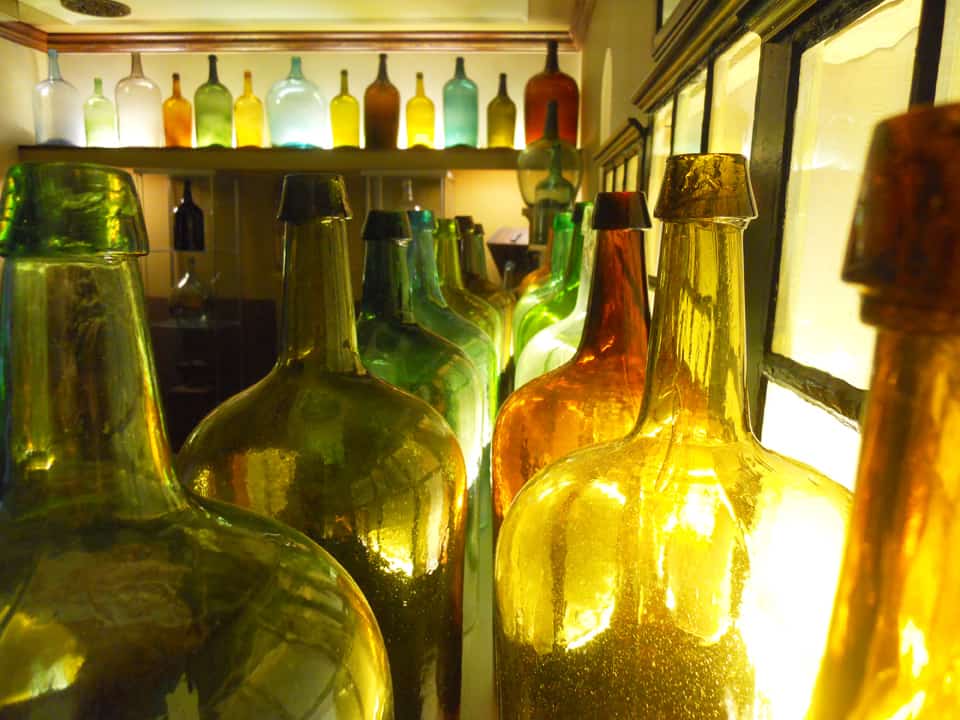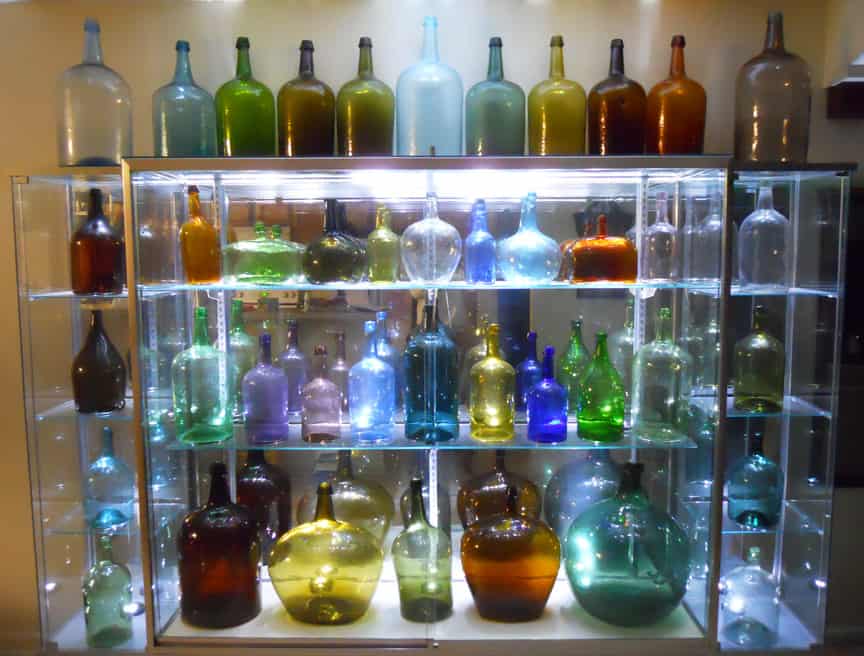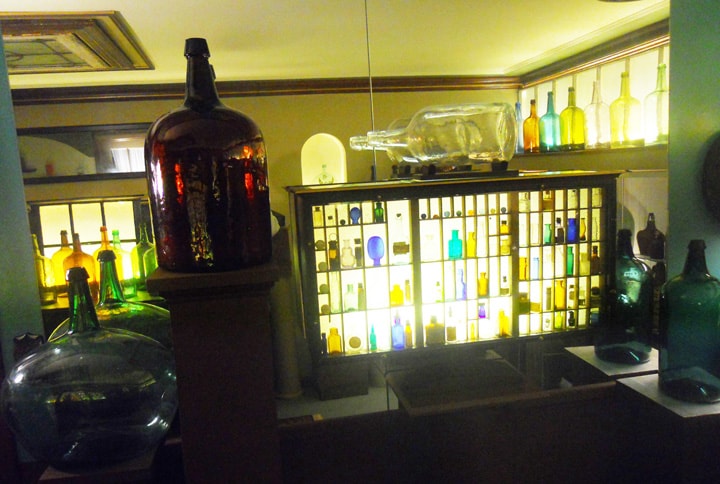On the Origin of Demijohns
Part 2
from Gene Ainsworth
14 December 2013
OK, not a lot of information about origin here, but maybe we can speculate a bit, and even if we don’t reach a definite conclusion about where they were made we can at least enjoy the pretty picture!
Obviously the forms of these two are completely different, but they do share a few similarities such as color, height, (about 18 inches) and the shape and size of the tops. Also, both have delicate, thin glass bodies making them lightweight for their size.
The so-called kidney shaped example is not extremely rare, I have seen them show up from time to time, sometimes in a greener shade of color than shown here. The freeblown cylinder does seem to be a rare one, I have only seen one other like it, same size and color but with a slightly longer neck.
The “kidney” has been given a possible western New York state attribution by a well informed source, and indeed the color of both of these demijohns is often associated with the Lockport Glass House which was located near Buffalo.
On the Origin of Demijohns
Part 1
from Gene Ainsworth
11 December 2013
Hi Ferd, stuck inside today because of the winter weather, but the snow does make a nice backdrop for bottle photos. Here is one of those photos and a little information about these bottles, which I have titled, “On the Origin of Demijohns“.
When it comes to most demijohns, not a lot is known about where they were made. Oftentimes, when asking about this, the best answer the collector has to settle for is, either “American” or “foreign.” The exact origin of the majority of these bottles will probably never be known. However, it does seem like many New England type demijohns are often attributed to specific glass factories and whether this information is actually true, or is erroneous tradition, or just wishful thinking, can be difficult to determine. So take the following for what its worth and let’s go for a little ride down the slippery slope of determining positive attribution.
Here we have an olive amber and two red amber demijohns. Everyone knows that any red amber bottle was blown at Stoddard! Well, probably not, but in this case both of these have been attributed to that factory. The enormous cylinder on the left has been called Stoddard or Keene by a well known and knowledgeable collector of New England utility bottles, who described it and sold it on his web site years ago. I obtained it from a collector in California, and after studying the first seller’s photograph of the bottle believe that they are one and the same. It measures 21″ high and has a wonderful dimpled appearance. I have never seen another like it.
The ovoid on the right was purchased from another respected New England collector. He had a pair of them which he attributed to Stoddard and said in the 45 years he has been collecting they were the only ones he has seen. A large 19″ tall, smooth base with raised dot and highly whittled.
The freeblown olive amber cylinder in the center has an old sticker on the base that reads “Keene.” Super crude glass which is full of bubbles, swirl lines, and potstones, with an extra large top and a beautifully curved neck, it is a superior cylinder and apparently the work of a master gaffer.
Gene

